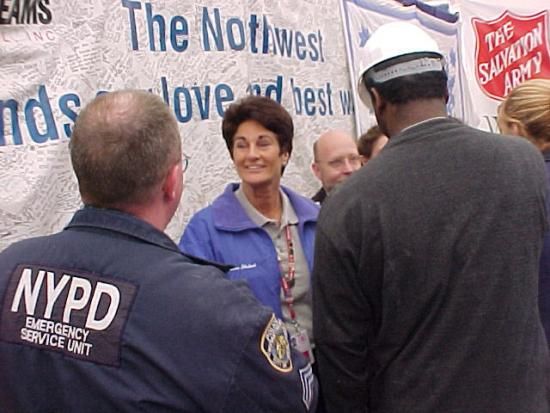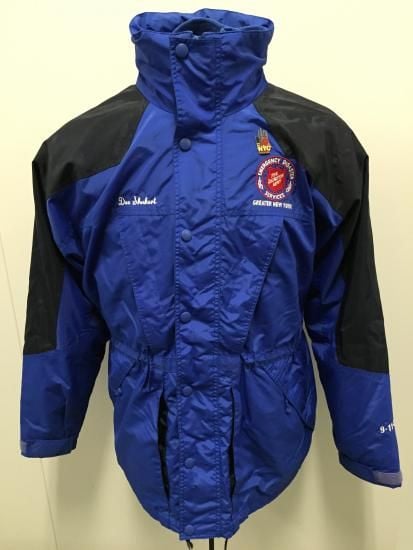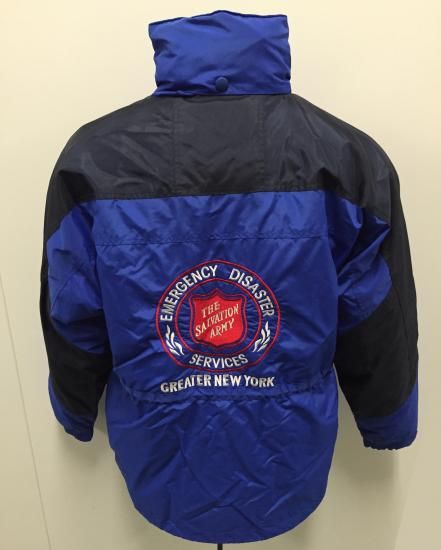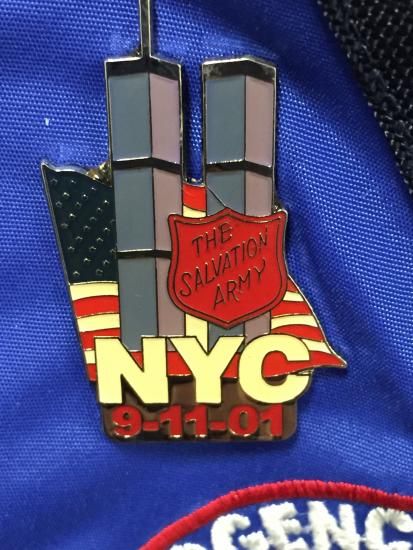NATIONAL MUSEUM OF AMERICAN HISTORY
A Salvation Army Jacket Comes to the Smithsonian Bearing Stories of 9/11
Dee Smith’s first thought watching live footage of September 11? “I need to get to work.”
:focal(188x186:189x187)/https://tf-cmsv2-smithsonianmag-media.s3.amazonaws.com/blogging/featured/2Jacket_front.jpg)
On September 11, 2001, many people watched tragedy unfold on television, dismayed that there was little they could do to help. At her home in Kansas City, Missouri, Dee Smith at first thought the images on television were from a trailer for a new movie, then realized New York City and other locations had been attacked. Her next thought: "I need to get to work." As the Divisional Disaster Services Director of the Salvation Army in Kansas City, Dee was first tasked with setting up accommodations for stranded travelers at Kansas City International Airport after all flights were ordered to land and expanding a call center to help with the incoming flood of calls, donations, and requests for prayers. After everything was in place, Dee flew to New York to continue relief work on behalf of the Salvation Army.

"Disaster response is my life," said Dee, "and just helping people by doing what we can do; and, although sometimes it is very minimal, our response can give those affected a ray of hope."
Operation Compassion Under Fire was the Salvation Army's large scale mission to help those affected after the tragedy at Ground Zero in New York City. The mission was to aid the fire department workers, ironworkers, engineers, victims' families, survivors and other volunteers after the attacks. Dee, volunteers, and the staff of the Salvation Army provided hot meals, clothing, shoes, counseling, and other immediate needs or services in the months following the disaster. The Salvation Army set up a feeding tent and shelter, nicknamed "The Taj." The Taj was located at the World Trade Center with a sibling site called The Hill Top Café located at the Fresh Kills site on western Staten Island.
Dee reminisced about the day she received her jacket. "Major George Polarek, assistant director of the Salvation Army, handed it to me and said, 'Here you’ve earned it. This is yours.'"


The jacket meant a lot to Dee. She continued to wear it throughout the rest of her career with the Salvation Army. The jacket was a special gift to all the command and administrative officials of the Salvation Army.

The jacket has special collectible pins attached to it from New York and New Jersey. These pins were traded by the volunteers, visiting firefighters, and other workers from other locations. The pins were considered badges of service and would be traded among the workers as a sign of solidarity. She later said, "It was just too special to hang at home in my closet."
To commemorate the 20th anniversary of the attacks, the museum is hosting a series of programs exploring their lasting impact. The museum is also launching a story collecting project—share your 9/11 story with the Smithsonian here.
This post was originally published on the National Museum of American History's blog on June 2, 2015. Read the original version here.
